
Discovering Japanese food is indeed a gastronomic experience. From delectable and beautiful (almost art-like) Japanese desserts to the wide selection of sushi, this cuisine definitely has sweet to umami covered. If there’s one more thing to learn about, it’s the Japanese dishes that highlight different kinds of noodles. Two prominent names among these Japanese noodle types are udon and soba. Want to know the difference between udon vs soba noodles? Then read on to find out!
What Are the Differences Between Udon vs Soba Noodles?
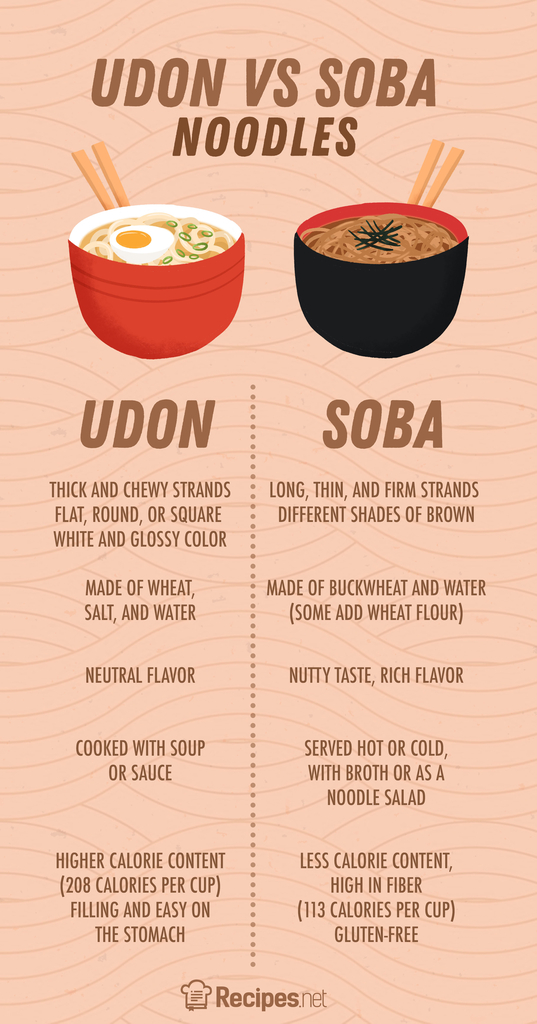
The differences between udon and soba noodles boil down to appearance, ingredients, flavor, and texture. They also differ when it comes to how you can enjoy them as well as their nutritional value.
Here’s a quick breakdown to help you fully understand these differences:
Appearance
Udon is a thicker noodle type that is usually white. On the other hand, soba has long, thin strands that come in different shades of brown.
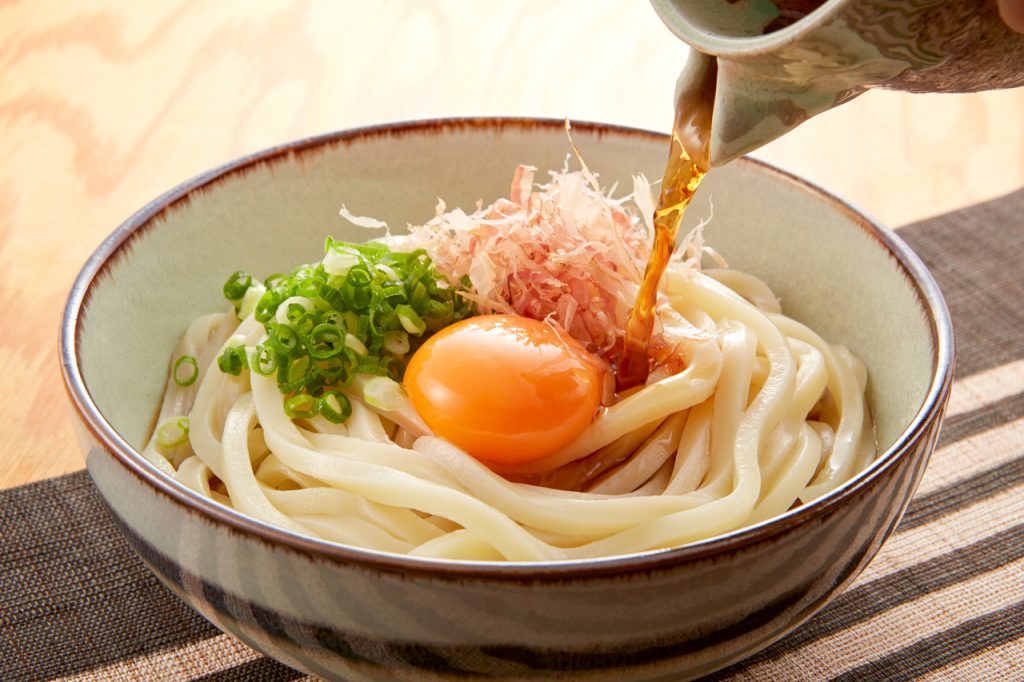
A bowl of udon noodles
Udon has thick strands, about four to six millimeters in width. It can be round, flat, or square and has a glossy white color when cooked.

Freshly made soba
On the other hand, soba has a long yet thin strand, almost spaghetti-like, noodles. Its color ranges from light to dark brown hues.
Ingredients
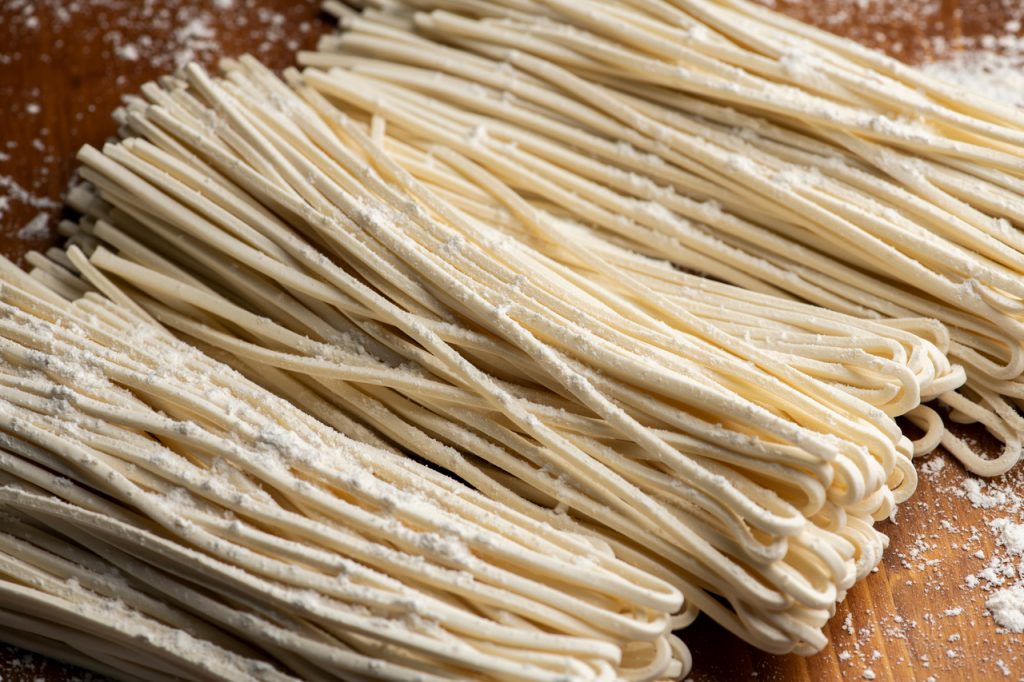
Udon is a wheat-based noodle type, while soba is made from buckwheat.
Udon is a Japanese wheat noodle, mainly made from wheat flour mixed with salt and water. They use these ingredients to create a dough that they knead to make the noodle strands. Are udon noodles gluten-free? No, they’re not. Since wheat contains gluten, people who are gluten sensitive or have celiac disease are advised not to include this in their diet.
Meanwhile, soba is a buckwheat noodle. It uses buckwheat flour as its main ingredient. Authentic soba noodles, also referred to as juwari soba (which literally translates to “pure” or “unadulterated”), are gluten-free as they use 100% buckwheat flour.
However, it is also good to note that soba noodles are available in varying buckwheat ratios. As a matter of fact, most sobas currently available in the market have added wheat flour, so we highly advise you to always check the label before buying. An example is hachiwari soba with 80% buckwheat flour and 20% wheat flour (a noodle that may not be gluten-friendly).
Flavor and Texture
Udon has a more basic taste with a chewy and bouncy texture. Soba noodles, on the other hand, have a firmer texture with a rich nutty flavor.
Since udon is a wheat flour noodle, it has a milder flavor profile. Chefs and home cooks prefer this noodle type because of its neutral flavor that they can easily mix and match with different soup bases or sauces. Once cooked, udon has a springy and chewy texture.
In contrast, soba is a bit different. Since its main ingredient is buckwheat, this noodle type has a bit nutty and rich flavor that provides an added layer of flavor once combined with broth or sauce. Its texture also varies depending on its buckwheat ratio. Juwari sobas are chewier but highly aromatic, while hachiwari sobas with an 80:20 ratio, have the right balance of chewiness and tenderness. Essentially, the more buckwheat used in the soba, the firmer its noodles are.
How They’re Eaten
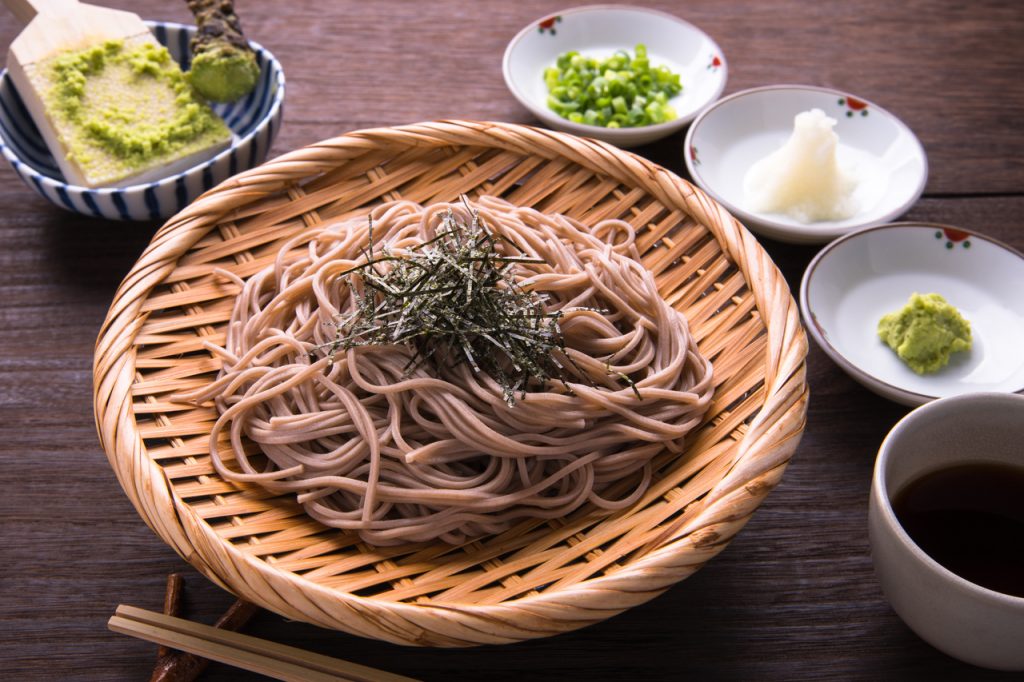
Usually sauce or broth-based, udon dishes tend to highlight the thick and chewy udon noodles. In contrast, soba can be served in different ways, whether as a soup or a noodle salad.
Udon noodles usually come in soups or sauce-based dishes to enhance the flavor of the noodles. However, these dishes are typically served with little to no toppings, highlighting the thick udon noodles. Because the noodle itself is already filling, partnering it with too many toppings may be overwhelming. Some examples of dishes that use udon noodles are kitsune udon (udon noodles in clear dashi broth topped with seasoned fried tofu) and curry udon.
Meanwhile, soba dishes are commonly available in Japan all year round. It is because soba can be served hot during winter and cold during summer days. Soba soups usually have a myriad of toppings. These options make a bowl of soup appetizing and visually appealing. You can also serve soba soupless or sauceless. Examples are noodle salads and zaru soba (strained cold soba) that you can partner with dipping sauces like tsuyu sauce for added flavor.
Nutritional Value
Soba is definitely healthier than udon. However, udon is more filling and easy on the stomach, making you feel full after consuming just a small amount.
Aside from the health benefits buckwheat provides, soba also has low calories, with only 113 for every cup. Per cup of this buckwheat noodle also contains 5.8 grams of protein, 24 grams of carbs, and 0.1% fats. If you are on a calorie deficit diet, do note that the sauces, broth, and toppings can also affect the calorie content of your dish.
On the other hand, udon may not have as many health benefits as soba, but it is a very filling noodle type that’ll help you feel full for a more extended period. It has higher caloric content than soba, with 208 calories per cup. It is also higher in terms of other macronutrients than soba, with 7.3 grams protein, 42 grams carbohydrates, and 1% fat per cup.
Udon vs Soba vs Ramen Noodles
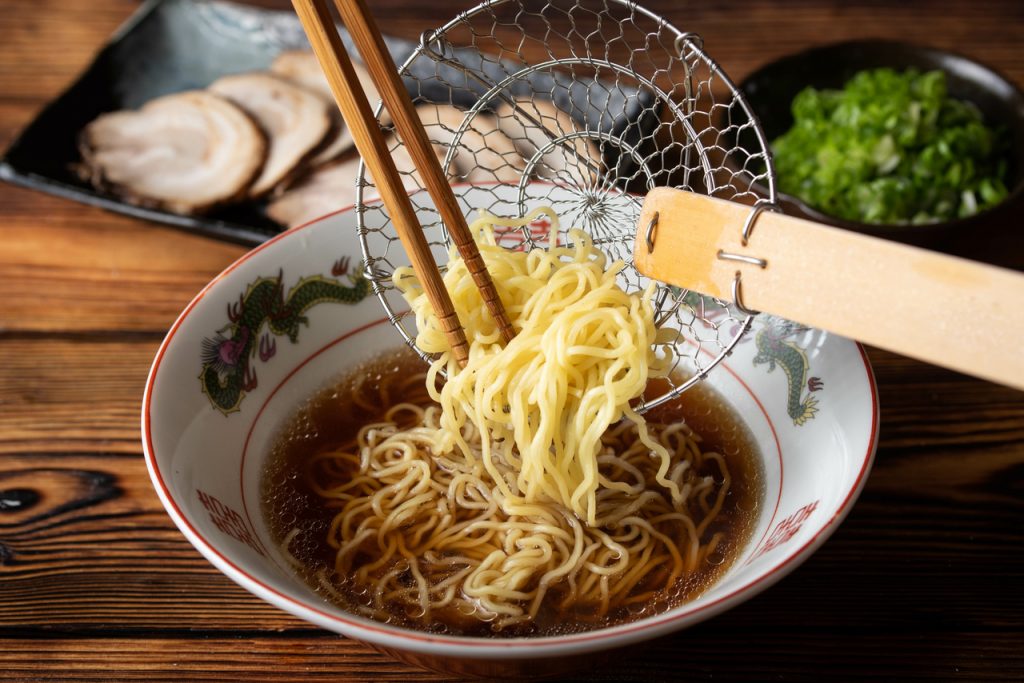
Udon and ramen noodles both use wheat flour as their main ingredient while soba uses buckwheat flour. However, the common difference between these three noodles is their appearance.
Both contain wheat flour, so what’s the difference between ramen vs udon? Well, ramen, a noodle type whose origin is China, has thinner and smaller noodle strands compared to the thick and chewy udon. And though both use wheat flour, ramen noodles contain eggs while udon only uses water as a dough binder.
Meanwhile, soba and ramen’s difference comes down to their main ingredient, with soba mainly using buckwheat while ramen noodles use wheat flour. Soba also usually has brownish thin and straight strands. Ramen noodles, conversely, are usually yellowish in color. Dehydrated ramens, which are mostly available in the market, are also usually wavy when dry and curly after boiling.
READ ALSO: Ultimate Guide to Types of Ramen: Classics to Varieties Explained
Udon and Soba Recipes That You Can Try

You might want to give these soda noodle recipes a try:
- Soy Citrus Scallops with Soba Noodles – Impress your date with this soba noodle dish with marinated scallops. It has the perfect blend of citrus, nutty, and herby flavors.
- Toshikoshi Soba (New Year’s Soba Noodle Soup) – Start your year slurping this umami-filled soba dish. This traditional New Year dish has a dashi broth that you can pair with toppings like tempura or fish cakes.
- Soba with Toasted Sesame Seed Sauce – Looking for a meal that you can quickly whip up in the kitchen? Try tossing soba noodles with toasted sesame seeds and a garlicky sauce. You can also add any veggie that you want!
And if you want thicker noodles, try these udon recipes instead:
- Nabeyaki Udon – Udon dishes do not usually have lots of toppings. However, this nabeyaki udon dish is truly a complete meal from its vegetables and meat toppings down to its udon noodles in dashi soup. It is warm and comforting — a perfect soup for the cold winter.
- Chicken Udon Soup with Bok Choy – Looking for something spicy? Give this chicken noodle soup a try! It has a little kick of spice that perfectly complements its chewy noodles and seasoned broth.
- Tempura Udon Soup – Japan’s popular noodle dish packed with umami and partnered with the crispy texture of freshly-made tempura and chewy udon noodles. Cook this dish at home, and the crowd will definitely be wowed.
Frequently Asked Questions
What can you use as a soba and udon substitute?
Looking for soba noodles and udon noodles substitutes? Well, you can use soba and udon as substitutes for each other. However, you can also use other noodle options like ramen and somen noodles. If you are looking for gluten-free alternatives, you can opt for rice noodles, Korean buckwheat, and kelp noodles.
What is the difference between yakisoba and yaki udon?
Yakisoba is a stir-fried noodle dish. However, despite its name, it is not made from soba noodles but wheat-based Chinese noodles. A tasty example is this chicken yakisoba recipe.
Wondering if there’s a difference between yakisoba vs yaki udon? Well, yaki udon is also a stir-fried noodle dish but is made of thick and chewy udon noodles.
Where to buy soba and udon noodles?
Dried or frozen versions of soba and udon noodles are widely available in supermarkets, groceries, and online stores. However, restaurants in Japan or other parts of the globe prefer to make their noodles fresh for a better and ensured quality.
Soba vs Udon Noodles: Which is Better?
Soba or udon? Which should you choose? Well, if you prefer food with higher nutritional value, go with the thinner, firmer, and usually gluten-free option, which is soba noodles. But if you like thicker, filling, and chewy noodles, don’t hesitate to try udon noodles! At the end of the day, it all depends on your preference.
Was this page helpful?
Read Next: Enchilada vs Burrito: How to Tell Them Apart











